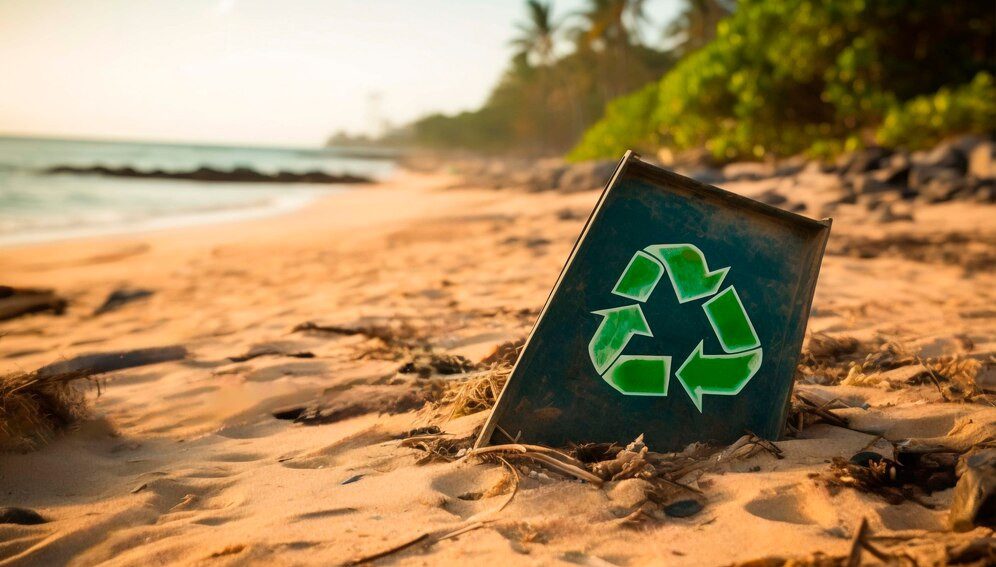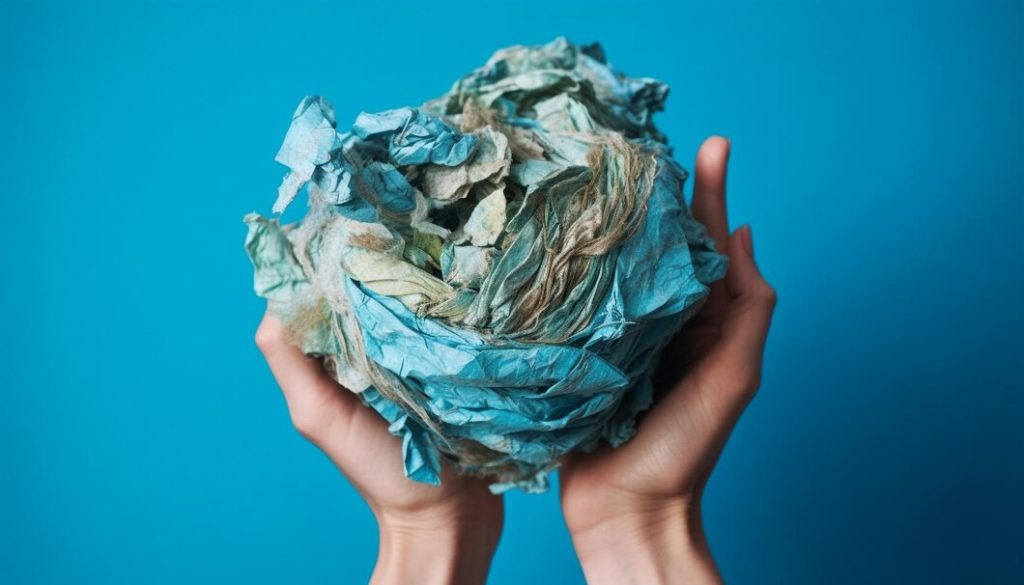How Polyethylene Is A More Sustainable Packaging Option Compared To Other Plastics

With the world focused on reducing plastic waste and improving sustainability, more brands are considering polyethylene (PE) as an alternative packaging material.
Polyethylene has some clear advantages over other popular plastics that make it an excellent choice for companies looking to lessen their environmental impact. In particular, polyethylene requires less energy for production, can be easily recycled, and is chemically stable and inert.
Polyethylene is also extremely versatile, it can be produced in thin films and lightweight formats to reduce material use without sacrificing durability. Compared to plastics like PET, PVC, and PS, polyethylene comes ahead on several sustainability metrics.
In this article, we’ll explore why polyethylene is emerging as a leader in sustainable and eco-friendly plastic packaging, from its efficient production process to end-of-life recyclability. When it comes to reducing plastic waste and carbon footprint, polyethylene delivers on both fronts.
Polyethylene Requires Less Energy To Produce
One of the biggest advantages of polyethylene over other plastics is that it requires substantially less energy to produce. The manufacturing process for polyethylene is simpler compared to the production of materials like PET (polyethylene terephthalate) and PVC (polyvinyl chloride). Polymerizing ethylene into polyethylene involves fewer steps and less processing compared to condensation reactions needed for PET and PVC.
The simplicity of joining ethylene molecules together in a polymerization reactor translates to lower energy requirements for heating and cooling. Studies have found that polyethylene resin production requires 25-35% less energy than PET resin. When you consider the vast scale of global plastic production, those energy savings quickly add up.
Less energy used in manufacturing means lower carbon emissions associated with polyethylene packaging. With brands and consumers increasingly considering the carbon footprint of packaging, polyethylene’s efficient production process gives it a sustainability edge.
Polyethylene Is Recyclable And Has Recycled Content
One of the most attractive features of polyethylene from a sustainability standpoint is that it can be continually recycled into new packaging and products. Polyethylene has well-established recycling pathways, and recycled PE resin is readily available.
The molecular structure of polyethylene allows it to be reprocessed multiple times without significant degradation of quality or performance. Once collected, polyethylene packaging can be cleaned, sorted, shredded, and remolded into recycled resin pellets.
These pellets can then be used to manufacture new PE products. In some cases, polyethylene packaging contains up to 100% recycled content from post-consumer sources. Unlike some plastics, recycled polyethylene does not suffer from reduced physical properties or discoloration issues.
The high recyclability and potential for high recycled content make polyethylene a promising material choice as brands aim to reduce waste and incorporate circular economy principles.
Curbside Recycling Of Polyethylene is Common
One reason behind the high recycling rates for polyethylene is that curbside collection of PE bags and films is common in many municipalities. Polyethylene plastic bags and wraps can be dropped off at many major retail locations so they can be sent for recycling.
Some curbside recycling programs are also able to accept clean and dry polyethylene films and bags when bundled together. The materials are then sent to specialized facilities like bag-to-bag recyclers who convert the PE into recycled resin pellets.
These pellets can be used to make new plastic bags, films, composite lumber, pipes, buckets, crates, and other products. Because polyethene bags are collected and recycled in such large volumes through retail and curbside channels, it helps boost the recycled content levels for new polyethylene packaging.
The wide availability of polyethene recycling programs makes it easier for consumers to properly recycle polyethylene materials rather than send them to landfills.
Polyethylene Has High Recycled Resin Usage

Thanks to its widespread recycling and availability of recycled resins, polyethylene has high rates of recycled content usage. Studies show polyethene packaging incorporates recycled resin at rates of 15-35% on average currently. This is significantly higher than materials like PET and polystyrene which have average recycled content rates under 10%. Some types of polyethylene packaging even utilize 100% recycled resins from post-consumer sources.
The high strength and durability of recycled polyethylene enable manufacturers to use it at these high levels without compromising quality or performance. As recycling programs expand and more recycled resins become available, the recycled content rate for polyethylene packaging will continue growing.
The high recycled resin utilization is a sustainability advantage for polyethylene compared to other plastics that cannot accommodate as much recycled material in their production processes. With recycled content being an important consideration for eco-conscious brands and consumers, polyethylene’s capabilities in this area make it an attractive packaging choice.
Related: 4 Innovative Uses For Polythene You’ve Never Thought Of
Polyethylene Is Chemically Stable And Inert
In addition to its recyclability and energy efficiency, polyethylene also stands out for its chemical stability and inertness. Polyethylene has a very simple and stable molecular structure that does not easily break down or react with other substances.
This inertness makes polyethylene an ideal material for food packaging and other sensitive applications. It does not leach harmful chemicals or degrade in a way that compromises the integrity of the contents inside. Polyethylene packaging helps prevent spoilage and contamination issues.
Polyethylene also withstands degradation from exposure to sunlight, water, and a wide range of temperatures and pH levels. It maintains its chemical structure without releasing problematic compounds throughout its lifecycle from production to end-of-life.
The chemical stability of polyethylene is an important sustainability factor that gives it advantages over plastics with less stable molecular structures prone to leaching chemicals as they degrade. When choosing responsible, eco-friendly packaging, polyethylene’s chemical inertness checks an important box.
Polyethylene is Versatile and Requires Less Material
One of the key sustainability benefits of polyethene is that it can be made into extremely thin, lightweight films and formats that use less raw material. Polyethylene has a high strength-to-density ratio that allows it to be produced as lightweight sheets and bags down to 10 microns in thickness. It maintains its durability and performance even at very low thickness and weight.
This gives product manufacturers the flexibility to switch to thinner polyethylene packaging to reduce plastic waste, without sacrificing protection for their items. Some examples of innovative thin polyethene packaging include lightweight veggie bags that replace thicker plastic produce bags, ultralight garbage bags that use up to 20% less plastic, and thin polyethylene pouches for shelf-stable foods and liquids.
The material efficiency and versatility of polyethylene enable a more sustainable packaging design compared to less adaptable plastics.
The Future Looks Bright For Sustainable Polyethylene Packaging
When looking at the full picture, polyethylene stands out as a leader in sustainable plastic packaging now and into the future. With its high recyclability, recycled content capabilities, chemical stability, energy efficiency, and material versatility, PE delivers across the board on key sustainability metrics. Brands and consumers alike are taking notice of polyethylene’s advantages. Polyethylene is expected to continue displacing less eco-friendly plastics in packaging applications ranging from consumer goods to food and beverages.
Additional innovations like increasing recycling rates, new bio-based polyethylene from renewable sources, and technologies to break down PE at the end of life will further boost sustainability. With expertise in polyethylene films and bags, companies like Polystar Plastics can help brands switch to more responsible PE packaging. The future looks bright for polyethylene to grow as the sustainable plastic packaging material of choice.
Read Also:

























Leave A Reply